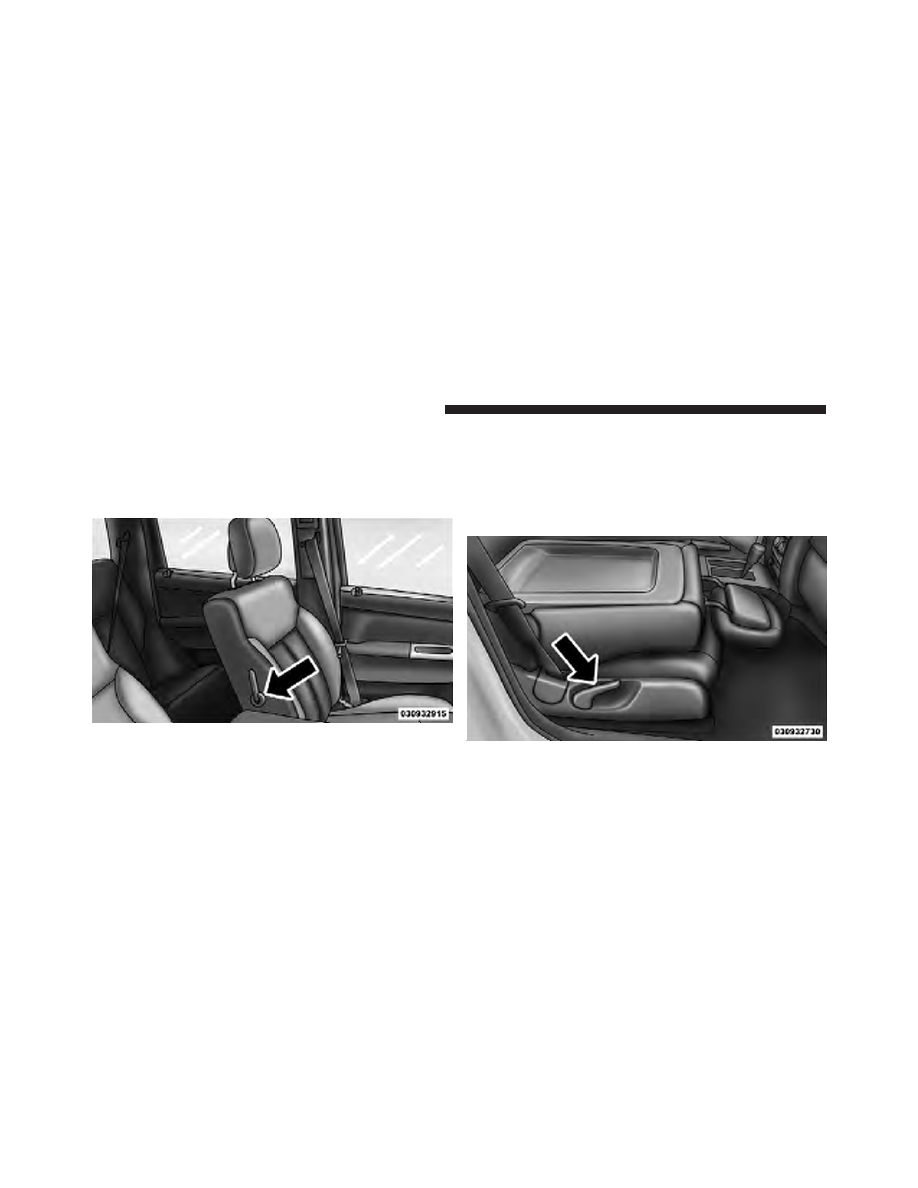Jeep Liberty (2012 year). Instruction - part 10

Manual Lumbar Support — If Equipped
For models equipped with manual lumbar the support
lever is located on the inboard side of the seat. Turn the
lever downward to increase and upward to decrease the
desired amount of lumbar support.
Fold-Flat Front Passenger Seat — If Equipped
This feature allows the front passenger seatback to fold
flat for extended cargo space. Some fold flat seats also
have a hardback surface that you can use as a work
surface when the seat is folded flat. Pull up on the lever
to fold down the seatback.
Lumbar Support Lever
Fold-Flat Passenger Seat
144
UNDERSTANDING THE FEATURES OF YOUR VEHICLE